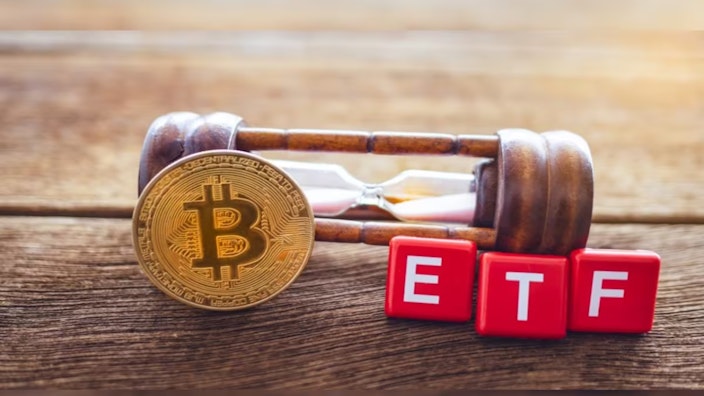Changing Bitcoin: The Past, The Present, and The Future (Part One)
For Bitcoin to achieve the lofty goals many have for it, its rules will need to change. This three-part series of articles will tackle what it takes to change Bitcoin.

For Bitcoin to achieve the lofty goals many have for it, its rules will need to change. But there is no formal process for changing Bitcoin’s rules. What can be learned from previous changes? And what can we expect on the journey?
This three-part series of articles will tackle what it takes to change Bitcoin. The series begins with what happened in the past when changes were proposed. Part two will cover what is happening now and the controversies and ideas being evaluated. Finally, the third part will consider what might happen in the future: will changes even be possible, or will Bitcoin become ossified — unable to change?
It is often said that Bitcoin is rules without rulers. That expression is a shorthand way of saying that none of Bitcoin’s many active participants are in any position of authority over any others. This description is accurate now. But it took very special circumstances to get Bitcoin to this state, and Bitcoin may be a one-of-a-kind invention possessing this property.
In Bitcoin’s earliest days, Satoshi made Bitcoin’s rules and occasionally modified them to make the system more secure. His leadership as its creator and maintainer made him its de facto ruler. Fortunately, he was a very principled ruler whose only goal was to create a system without any ruler (himself included). While Satoshi’s greatest contribution to Bitcoin was creating it, disappearing forever was certainly the second-greatest thing he ever did for it because it was that act that completed Bitcoin’s creation as an entirely ruler-less, truly decentralized entity.
Typically, when leaders leave, there is some process where a new leader is chosen. Even if there isn’t a formal process, would-be rulers vie for and rise to positions of authority and control. But this was not so in Bitcoin — by design. Satoshi intentionally left no successor.
Every feature of Bitcoin was designed to operate without needing any leader’s approval and to resist anyone’s claim of authority over any other person. Anyone could participate in any aspect of Bitcoin without requiring anyone else’s permission.
Despite the fact that Bitcoin is open-source software, meaning that anyone could make a variant of it, nobody was able to recreate this ruler-less feature of Bitcoin. Few other creators of other cryptocurrencies ever concealed their true identity, let alone disappeared.
Whether those founders exited by dumping coins and leaving chaos or remained in charge, thereby preventing a leader-less state from taking hold, there simply is no other large, decentralized cryptocurrency.
The rules of Bitcoin essentially govern one thing: What constitutes the single, valid history of Bitcoin. Bitcoin is a chronologically ordered ledger of transactions organized into a never-ending sequence of blocks of those transactions. This chronicle is commonly referred to as the blockchain.
The rules ensure that everyone agrees on one and only one version of history. These rules are enforced by everyone running Bitcoin software. Everyone agrees on a singular history because everyone enforces rules that lead to them all reaching the exact same conclusions about what the chronicle contains.
This is remarkable partly because many participants would rather that the chronicle was different than it is, but they still agree despite their different preferences. Who, after all, doesn’t want to have more Bitcoin than they currently do? So why wouldn’t we want to make
one little change, giving us more Bitcoin than we currently have? Well, whether we want to or not, we can’t because the rules ensure that there are only two ways in Bitcoin to obtain Bitcoin. The first is to have someone who has Bitcoin send you some portion of what they
have. The second is to succeed at the task of adding a new block to the blockchain and claim the reward of newly issued coins and fees paid by the people who created the transactions that you included in that block.
Since there are no rulers in Bitcoin, anyone is actually free to run whatever rules they want. If those rules allow for anything to be added that the old rules didn’t permit and even a single previously unpermitted transaction or block gets added to the blockchain of the persons running that modified software, a new chain is created that splits off from the chain being maintained by those people running the software that didn’t permit that addition.
Swan Bitcoin Private Insight #32
Chain splits of this nature are called “hard forks.” Allowing something previously disallowed means that everyone enforcing the old rules will disregard anything in the new-rule chronicle from the moment it includes an impermissible change.
Hard forks sever from their blockchain everyone who doesn’t change their software to now permit what was previously not permitted. (These include changes like increasing the number of coins, decreasing the difficulty of finding a block, or spending coins that have already been spent before.) For this reason, hard forks face the monumentally difficult task of claiming to be Bitcoin because they require not only that everyone agree to their rule changes but also that everyone actually change their software to enforce this rule change. Since Satoshi’s departure, every hard fork of Bitcoin has led to some new chain that has not been adopted or recognized as Bitcoin by the overwhelming majority of users and exchanges. (There is debate as to whether any of the changes Satoshi made constituted hard or soft forks, but they’re irrelevant to the current post-Satoshi state of Bitcoin.)
Hard forks of Bitcoin are simply not plausible methods for changing Bitcoin (except in the case of repairing of some kind of catastrophic flaw that can only be fixed in that way).
However, this does not mean there is no way to change Bitcoin. Its rules can and do change.
They change through a technique called soft-forks — a technique that when implemented correctly does not lead to chain-splits, thus maintaining a single record everyone agrees is the one and only true record, even if they do not enforce the new rules. How?
Soft forks change the rules not by allowing something that was impermissible to be permitted but by making something previously permitted no longer permissible after a certain point in time. They allow for new types of transactions to be created which don’t violate any of the old rules. Instead, they add restrictions to previously allowed transactions and make use of those new restrictions to enable new functionality.
If all the miners enforce these new restrictions, no chain split can ever occur, even if not everyone updates to enforce these new rules (because they don’t violate the old rules).
Swan Bitcoin Private Insight #32
How does adding a restriction allow for more possibilities rather than less? And what special role do miners have? Consider this simple thought experiment: Imagine there is a pathway on a lawn leading from the roadway to the entrance of a castle. On the lawn is a sign with the rule saying, “KEEP OFF THE GRASS.” That’s a simple enough rule.
Everyone walks on the path and not on the grass. Everyone also makes sure that nobody else is walking on the grass. And there are guards that prevent anyone from walking on the grass.

Swan Bitcoin Private Insight #32
Then, a new restriction is added. It says, “Keep to the right as of January 1st, 2024.” Obeying this rule does not contradict or violate the first rule of “Do not walk on the grass.” However, once it goes into effect there’s now two types of valid ways to walk on the path — one side of the path only allows for walking towards the castle and the other side only allows for walking towards the roadway.
Now, casual users of the roadway may not all be aware of this new rule and may only be checking after the activation date that everyone else is simply not walking on the grass. But as long as all the guards enforce the new rule starting on its passage and prevent anyone from violating it, there’s still an orderly functioning of the path despite the new rule.
In the above example, guards represent the miners in Bitcoin. Miners are the only participants in Bitcoin who add records to the blockchain. Thus, as long as they’re enforcing the restriction on all transactions in new blocks, no version of the chain they produce will include anything that violates the new rules. Since the new rules don’t violate the old rules (e.g., staying on the right side of the path is still staying off the grass), anyone who is not a miner that didn’t upgrade in time to enforce the new rules will still not have any issues confirming that these new blocks all adhere perfectly to all the old rules.
Still, it’s not so easy to get these changes made in Bitcoin. In hindsight, it’s ironic that they’re called soft forks because activating them turns out to be extremely hard.
Thinking of the past two soft forks in Bitcoin, known as SegWit and Taproot, when these changes occurred, they were not without controversy. And there was an attempted third soft-fork, OP_CTV, that failed to get activated.

SegWit was expected to activate fairly quickly. Instead, it took a whole year to activate even after its activation method was released into Bitcoin Core. (Bitcoin Core is the software that at that time, and still today, encodes and enforces the rules that make up Bitcoin.) SegWit’s activation could have taken only two weeks. It simply required that 95% of the mined blocks in a given difficulty epoch (a roughly two-week, 2,140 block period) declared in those blocks that they were ready to enforce the new SegWit rules. (This article does not have time to go into the details of what SegWit’s rules were.)
But this simple path that most people expected activation to follow was not what transpired. In fact, SegWit was nearly not activated! There was a deadline by which it had to be activated, and in what became known as “the Blocksize War,” ordinary users of Bitcoin threatened to reject miners' blocks if those blocks didn’t “signal readiness” by the last difficulty epoch before this deadline expired. (For more on this, read The Blocksize War by Jonathan Bier or The Blocksize War’s Cyber-Solider Freedom-Fighters by Tomer Strolight.)
If we try to frame it up in the “stay-to-the-right-of-the-pathway” example above, Segwit’s activation might have read, “Starting January 1st, 2024, stay to the right of the path as soon as 95% of the guards raise their right hands in any two-week period, up until December 31st, 2024.”
However, things didn’t go as planned. The metaphorical guards did not raise their hands as expected, or rather, the miners did not signal readiness as expected. It turned out there wasn’t a consensus to make this rule change.
Activating the new rules required a change in the plan by the people who did want to activate it, which constituted the vast majority of dedicated Bitcoin users. It required the development of a new activation method when the original one failed. It required action — coming up with a plan that recognized that there was opposition to implementing the proposed rule changes and overcoming that opposition.

Activating the SegWit soft fork turned out to look nothing like what was described in the simple “pathway-to-the-castle” analogy above. Imagine in that example if most people using the path wanted to activate the new rule of everyone staying to the right, but the guards were actually opposed to it, because the guards’ incentives led to them getting paid more if they did not activate the rule. What could the path-users do?
Well, in the case of SegWit’s activation, leaders in the Bitcoin community had to step up to do something unprecedented. They had to get the users to do something that would get the miners to activate the new rule. They had to come up with an idea that would accomplish this, and they had to get the users to support this idea.
This required some people to lead the effort — to become leaders. But leadership in Bitcoin doesn’t involve issuing orders since nobody has any authority over anyone else. Leadership instead requires cleverness in coding and game-theory, and persuasion of a group of people whose credo is “Don’t Trust. Verify.”

You can see how hard this might be.
The case made to users for activating SegWit was not that hard — SegWit would fix a bug, lower fees, and accelerate the creation of the Lightning Network, which itself would make Bitcoin faster and cheaper to use and scale capacity many times over. But it needed explaining and clarifying nevertheless.
However, the real innovation in the strategy lay in creating a new rule that users would enforce upon the miners. In our example of the pathway, it meant getting the path-walkers to enforce a rule on the path-guards that would get the guards to enforce the stay-to-the-right-of-the-path rule on the path walkers. What a twist!
Someone who remained pseudonymous (following in the tradition of the pseudonymous Satoshi Nakamoto) coded up a variant of Bitcoin Core. It enforced a new rule. That rule said that if by the final two-week activation window for Segwit, a miner submitted a new block that didn’t signal to activate SegWit (even if everything else in the block was valid), then the block would be considered invalid by the user running this variant. Returning again to the path-on-the-grass analogy, it was code that said that the path-walkers would not pay the guards unless the guards enforced the new stay-to-the-right rule.
In the end, this succeeded in activating the SegWit soft fork because all the miners, fearing their rewards might be rejected, all fell in line.
Activating Segwit took its toll on users, miners, leaders, and everyone else. It was years before anyone proposed the next soft-fork, Taproot.
The developers who maintained Bitcoin Core at the time were extremely hesitant to release any activation method for it, despite this time there not being the miner opposition that existed during SegWit. Months and months of discussion passed by without an activation method being released. Everyone was battle-weary and fearful of another activation war.
Finally, some users proposed and released code that used the same activation method for Taproot as had been used for SegWit, called a User Activated Soft Fork, for obvious reasons. This threatened to create the SegWit controversy all over again, and the mere thought of going through another such a battle again broke the logjam. Quickly, it led to the release of a low-risk activation proposal by Bitcoin Core, known as “speedy trial, ” and the miners promptly supported it in full. (That, at least, is this author’s interpretation of the causes and effects behind this order of events.)
Taproot, thus, was hard to activate as well. But it required a very different leadership approach to activation than SegWit. It required a threat of a war that nobody wanted to fight rather than the fighting of war. Everyone wanted to activate Taproot, but the hesitancy over the activation method led to stalling until, at last, someone with little to lose pushed everyone who was hesitant over the edge of inaction by making inaction riskier than action.
The next soft fork proposal was for a feature called OP_CTV. Its advocate proposed the same “speedy trial” method that activated Taproot. But it simply failed to win the necessary support and was abandoned at the time.

While those in favor of this change were enthusiastic about it, others wanted to take a “wait-and-see” attitude to observe the benefits and potential downfalls of Taproot first. It was simply too hard to get that third soft fork approved so soon after the energy it took to activate the previous ones.
And this now brings us to the present, where OP_CTV and many proposals like it are once again being recommended. We will discuss the present state of changing Bitcoin in the next installment of this series.
Swan IRA — Real Bitcoin, No Taxes*
Hold your IRA with the most trusted name in Bitcoin.
Tomer Strolight is Editor-in-Chief at Swan Bitcoin. He completed bachelors and masters degrees at Toronto’s Schulich School of Business. Tomer spent 25 years operating businesses in digital media and private equity before turning his attention full time to Bitcoin. Tomer wrote the book “Why Bitcoin?” a collection of 27 short articles each explaining a different facet of this revolutionary new monetary system. Tomer also wrote and narrated the short film “Bitcoin Is Generational Wealth”. He has appeared on many Bitcoin podcasts including What Bitcoin Did, The Stephan Livera Podcast, Bitcoin Rapid Fire, Twice Bitten, the Bitcoin Matrix and many more.
More from Swan Signal Blog
Thoughts on Bitcoin from the Swan team and friends.


MSTR vs. GBTC Compared: Which is Best in 2024?

By Drew
This article compares MSTR and GBTC, offering insights for investors by examining their features, benefits, performance, fees, and drawbacks, focusing on their role in Bitcoin investment strategies.


4 Reasons to Avoid Coinbase In 2024?

By Matt Ruby
The crypto platform is facing all kinds of problems. Is it time for customers to seek out an alternative?


Best Bitcoin ETF Fees: Compare Top Providers

By Matt Ruby
Spot Bitcoin ETFs are here! Learn all about their fees, why they matter, who has the lowest and how they’ll impact Bitcoin in the future.
